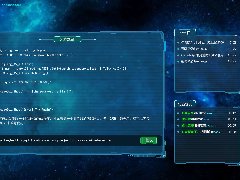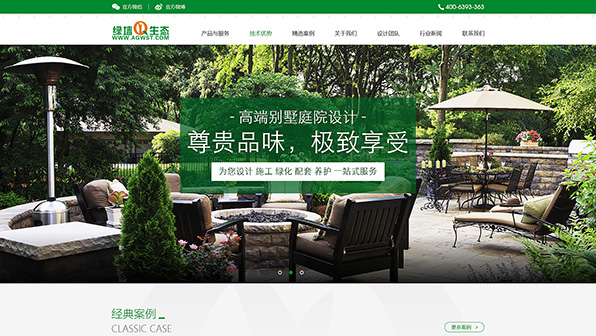原创内容,转载请注明原文网址:http://homeqin.cn/a/wenzhangboke/jishutiandi/Android/2019/0926/660.html
【App开发培训申明】
【正文】
一、ListFragement的说明:
ListFragment秉承于Fragment。因此它具备Fragment的特性,能够作为activity中的一片面,目标也是为了使页面计划加倍天真。相比Fragment,ListFragment的内容因此列表(list)的形式表现的。
1、ListFragment结构:
ListFragment的默认结构包含一个list view。因此,在ListFragment对应的结构文件中,必需指定一个 android:id 为 “@android:id/list” 的ListView控件! 若用户想点窜listview,可以在onCreateView(LayoutInflater, ViewGroup, Bundle)中进行点窜。固然,用户也能够在ListFragment的结构中包含其它的控件。
下面是官方文档中ListFragment对应的一个layout示例:
复制代码
<?xml version="1.0" encoding="utf-8"?>
<LinearLayout xmlns:android="http://schemas.android.com/apk/res/android"
android:orientation="vertical"
android:layout_width="match_parent"
android:layout_height="match_parent"
android:paddingLeft="8dp"
android:paddingRight="8dp">
<ListView android:id="@id/android:list"
android:layout_width="match_parent"
android:layout_height="match_parent"
android:background="#00FF00"
android:layout_weight="1"
android:drawSelectorOnTop="false"/>
<TextView android:id="@id/android:empty"
android:layout_width="match_parent"
android:layout_height="match_parent"
android:background="#FF0000"
android:text="No data"/>
</LinearLayout>
复制代码
ListView中每一行的表现内容,是通过配置适配器ListAdapter来实现的。我们既可以自定义,也能够接纳体系默认的layout。背面的运用实例中,会分别枚举2种环境下的表现
2、绑定命据:
ListFragment绑定ListView的数据(即绑定适配器)时,必需通过ListFragment.setListAdapter()接口来绑定命据,而不是应用ListView.setAdapter() 或其它方法
二、通过ArrayAdapter来加载ListFragment的举例:
【举例】当今常州网站开发培训将平板计算机分成三片面:点击左侧的按钮,出现中心的消息题目列表(ListFragment),点击中心ListFragment的某个item,在非常右侧的fragment中表现细目。
新建工程文件m01_ListFragment01:
(1)定义activity_main.xml的结构:
activity_main.xml的代码如下:
复制代码
<LinearLayout xmlns:android="http://schemas.android.com/apk/res/android"
xmlns:tools="http://schemas.android.com/tools"
android:layout_width="match_parent"
android:layout_height="match_parent"
tools:context=".MainActivity" >
<LinearLayout
android:id="@+id/left"
android:layout_width="0dp"
android:layout_height="match_parent"
android:layout_weight="1"
android:background="#cccccc"
android:orientation="horizontal" >
<Button
android:id="@+id/button1"
android:layout_width="match_parent"
android:layout_height="wrap_content"
android:textSize="14sp"
android:text="show ListFragment" />
</LinearLayout>
<LinearLayout
android:id="@+id/center"
android:layout_width="0dp"
android:layout_height="match_parent"
android:layout_weight="2"
android:background="#AFEEEE"
android:orientation="vertical" >
</LinearLayout>
<LinearLayout
android:id="@+id/center"
android:layout_width="0dp"
android:layout_height="match_parent"
android:layout_weight="2"
android:background="#00FFFF"
android:orientation="vertical" >
</LinearLayout>
</LinearLayout>
复制代码
现实上分派了三个线性结构,左侧表现按钮,中心表现题目,右侧表现细目。这个结构文件对应的可视化界面如下:
(2)定义中心的ListFragment,即新建文件ArticleListFragment.java:
ArticleListFragment.java的代码如下:
复制代码
1 package com.example.m01_listfragment01;
2
3 import java.util.ArrayList;
4 import java.util.List;
5
6 import android.app.ListFragment;
7 import android.os.Bundle;
8 import android.view.LayoutInflater;
9 import android.view.View;
10 import android.view.ViewGroup;
11 import android.widget.ArrayAdapter;
12
13 public class ArticleListFragment extends ListFragment {
14
15 private ArrayAdapter<String> adapter;
16
17 @Override
18 public void onCreate(Bundle savedInstanceState) {
19 // TODO Auto-generated method stub
20 super.onCreate(savedInstanceState);
21
22 //定义一个数组
23 List<String> data = new ArrayList<String>();
24 for (int i = 0; i < 30; i++) {
25 data.add("smyh" + i);
26 }
27 //将数组加到ArrayAdapter中心
28 adapter = new ArrayAdapter<String>(getActivity(),
29 android.R.layout.simple_list_item_1, data);
30 //绑定适配器时,必需通过ListFragment.setListAdapter()接口,而不是ListView.setAdapter()或其它方法
31 setListAdapter(adapter);
32 }
33
34 @Override
35 public View onCreateView(LayoutInflater inflater, ViewGroup container,
36 Bundle savedInstanceState) {
37 // TODO Auto-generated method stub
38 return super.onCreateView(inflater, container, savedInstanceState);
39 }
40
41 @Override
42 public void onPause() {
43 // TODO Auto-generated method stub
44 super.onPause();
45 }
46 }
复制代码
焦点代码是22至32行:我们让这个Fragment秉承ListFragment,而后在onCreate()方法中定义一个ArrayAdapter,将数据放进入,非常后绑定适配器就行了。需求留意的是,因为我们秉承的是ListFragment,这个Fragment默认自带了一个结构,以是我们不需求从新新建结构文件了。
(3)将中心的ListFragment加载到Activity中心去。当我们点击按钮时,就开始加载这个Fragment:
MainActivity.java的代码如下:
复制代码
1 package com.example.m01_listfragment01;
2
3 import android.app.Activity;
4 import android.app.FragmentManager;
5 import android.app.FragmentTransaction;
6 import android.os.Bundle;
7 import android.view.Menu;
8 import android.view.View;
9 import android.view.View.OnClickListener;
10 import android.widget.Button;
11
12 public class MainActivity extends Activity {
13
14 private FragmentManager manager;
15 private FragmentTransaction transaction;
16 @Override
17 protected void onCreate(Bundle savedInstanceState) {
18 super.onCreate(savedInstanceState);
19 setContentView(R.layout.activity_main);
20 Button button = (Button) findViewById(R.id.button1);
21 button.setOnClickListener(new OnClickListener() {
22
23 //点击按钮,加载ListFragment
24 @Override
25 public void onClick(View v) {
26 // TODO Auto-generated method stub
27 manager = getFragmentManager();
28 transaction = manager.beginTransaction();
29 ArticleListFragment articleListFragment = new ArticleListFragment();
30 transaction.add(R.id.center, articleListFragment, "article");
31 transaction.co毫米it();
32 }
33 });
34
35 }
36
37 @Override
38 public boolean onCreateOptionsMenu(Menu menu) {
39 // Inflate the menu; this adds items to the action bar if it is present.
40 getMenuInflater().inflate(R.menu.main, menu);
41 return true;
42 }
43 }
复制代码
这个代码对照简单,就未几注释了。
当今运转程序,初始界面如下:
点击左侧的按钮后,表现如下:
注:要是想实现:点击中心的某个item,弹出吐司表现那个item中的内容,可以在上方的ArticleListFragment.java中的监听事件里增加如下代码:
(代码放置的位置是:让它和Fragment的性命周期方法并列就行了)
复制代码
1 @Override
2 public void onListItemClick(ListView l, View v, int position, long id) {
3 // TODO Auto-generated method stub
4 super.onListItemClick(l, v, position, id);
5 String item = adapter.getItem(position);
6 Toast.makeText(getActivity(), item, 1).show();
7 }
复制代码
由此我们常州软件技术培训可以看到,监听事件的函数为onListItemClick(),可以干脆写,不需求set。
这内部环节代码在第05行,通过getItem()汲取那个item,而后用字符串来汲取。
我们先去掉这片面的监听事件代码,继续往下看。
(4)点击中心ListFragment的item,加载右侧的DetailFragment:
我们在中心ListFragment中增加一个按钮的监听事件,监听事件的函数为onListItemClick(),ArticleListFragment.java在上头代码的底子之上,增加的代码如下:
(代码放置的位置是:让它和Fragment的性命周期方法并列就行了)
复制代码
1 //点击按钮,加载非常右侧的Fragment
2 @Override
3 public void onListItemClick(ListView l, View v, int position, long id) {
4 // TODO Auto-generated method stub
5 super.onListItemClick(l, v, position, id);
6
7 //点击按钮后,加载右侧的Fragment
8 FragmentManager manager = getFragmentManager();
9 FragmentTransaction transaction = manager.beginTransaction();
10 DetailFragment detailFragment = new DetailFragment();
11 //记着:这个处所必需用replace,而不是用add
12 transaction.replace(R.id.right, detailFragment, "detailFragment");
13
14 //将中心的item的内容放到Bundle工具中心,而后放到非常右侧Frament的参数中心
15 String item = adapter.getItem(position);
16 Bundle args = new Bundle();
17 args.putString("item",item);
18 detailFragment.setArguments(args);
19 //Toast.makeText(getActivity(), item, 1).show();
20
21 transaction.co毫米it();
22 }
复制代码
上头的代码中,我们是在中心的Fragment中点击按钮,而后加载右侧的Fragment,而后要留意14至18行的焦点代码,看一下它是若何通过bundle来传递数据的。
需求留意的是,第12行代码必需用replace的方法加载右侧的fragment,而不是add;要是用add,运转的错误稍后将展现出来。
(5)定义右侧的DetailFragment:
先定义结构文件,在内部加一个TextView,fragment_detail.xml的代码如下:
复制代码
<?xml version="1.0" encoding="utf-8"?>
<LinearLayout xmlns:android="http://schemas.android.com/apk/res/android"
android:layout_width="match_parent"
android:layout_height="match_parent"
android:orientation="vertical" >
<TextView
android:id="@+id/textView1"
android:layout_width="wrap_content"
android:layout_height="wrap_content"
android:text="TextView" />
</LinearLayout>
复制代码
而后新建文件,DetailFragment.java的代码如下:
复制代码
1 package com.example.m01_listfragment01;
2
3 import android.app.Fragment;
4 import android.os.Bundle;
5 import android.view.LayoutInflater;
6 import android.view.View;
7 import android.view.ViewGroup;
8 import android.widget.TextView;
9
10 public class DetailFragment extends Fragment {
11
12
13 @Override
14 public void onCreate(Bundle savedInstanceState) {
15 // TODO Auto-generated method stub
16 super.onCreate(savedInstanceState);
17 }
18
19 @Override
20 public View onCreateView(LayoutInflater inflater, ViewGroup container,
21 Bundle savedInstanceState) {
22 // TODO Auto-generated method stub
23 View view = inflater.inflate(R.layout.fragment_detail, null);
24 TextView textView = (TextView)view.findViewById(R.id.textView1);
25 textView.setText(""+getArguments().getString("item"));
26 return view;
27 }
28
29 @Override
30 public void onPause() {
31 // TODO Auto-generated method stub
32 super.onPause();
33 }
34 }
复制代码
焦点代码是第25行,周密看一下我们是怎么通过键值对来拿到中心的Fragment传递过来的item的内容。
当今运转程序,一次点击左边的按钮和中心的item,结果如下:
要是我们在中心的Fragment中错误地通过add方法加载右侧的Fragment,而不是通过replace方法,非常终错误的结果如下:
也即是说,每点击一次中心的item,就会在右侧继续加载一个文本,而不是替代的方法,很鲜明,这种方法不是我们常州平台运营想要的。
上篇:上一篇:Android微信抢红包插件说明和开辟实现
下篇:下一篇:AccessibilityService实现自动遍历点赞功效







